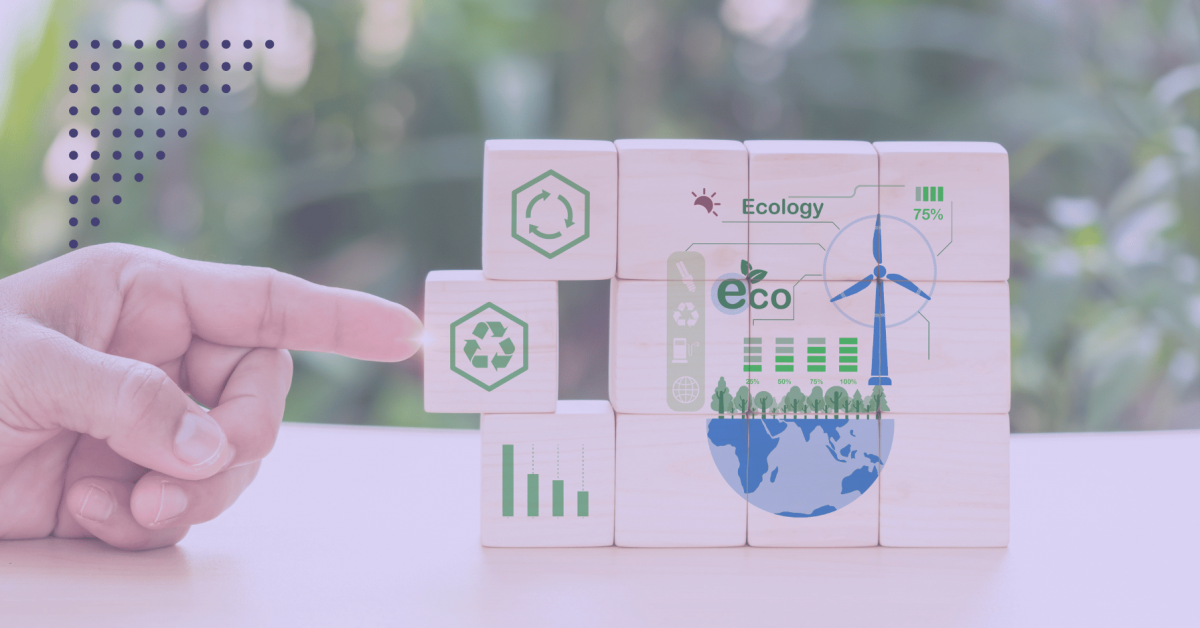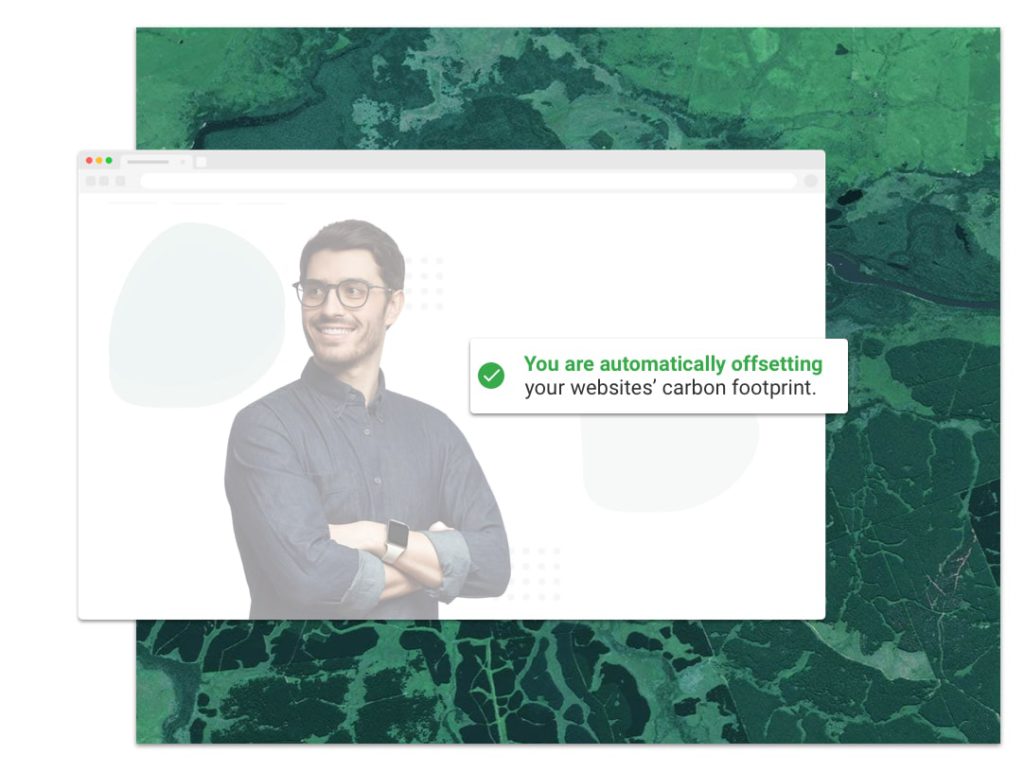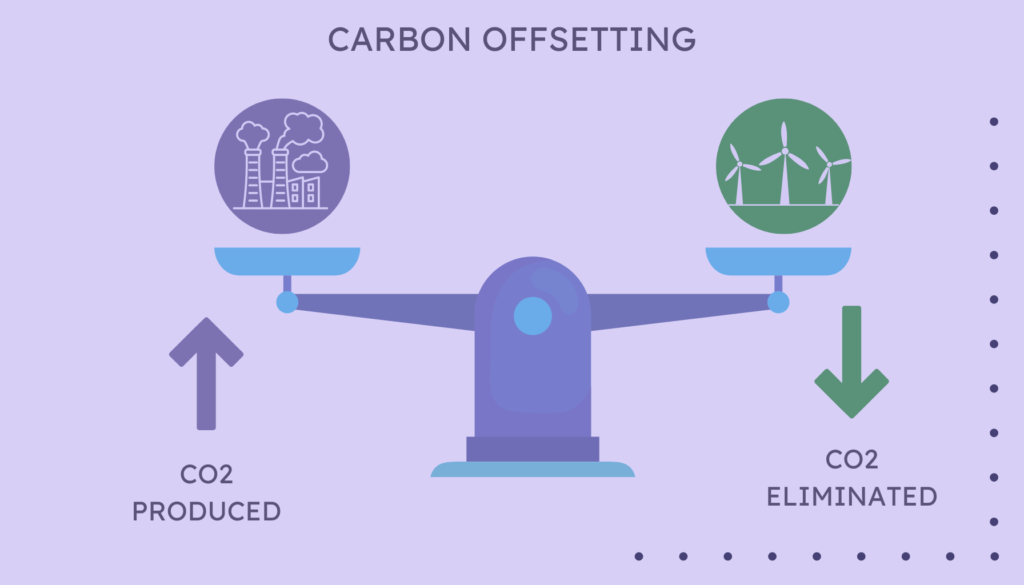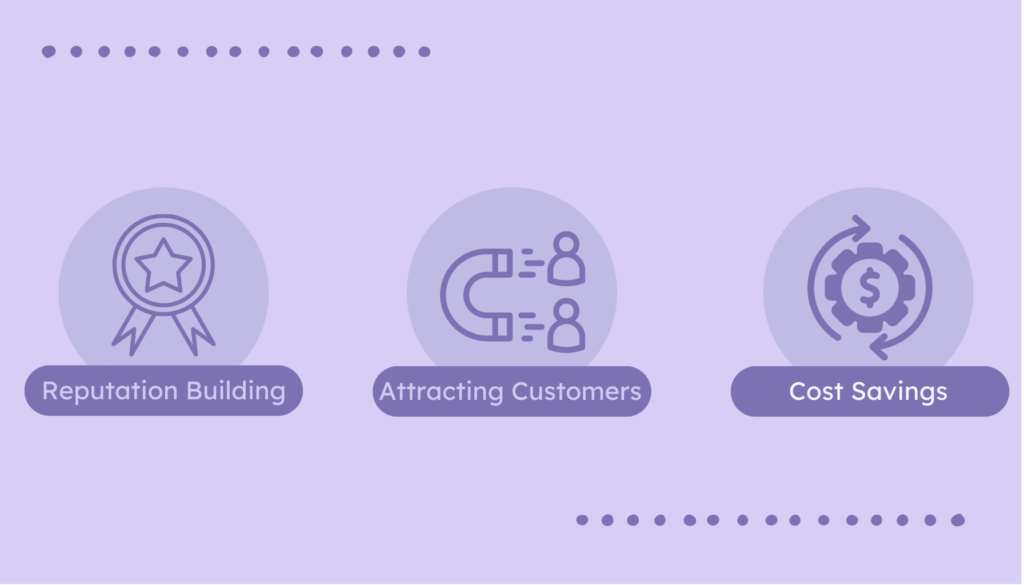
As the global community continues to grapple with the threat of climate change, more and more companies are stepping up to the challenge of reducing their carbon footprint. In the digital space, companies are uniquely positioned to make a significant impact, given the growing reliance on digital services and products in our daily lives.
From tech giants like Google and Microsoft to e-commerce platforms like Shopify, there are a number of leading companies that are making a concerted effort to become carbon neutral. These companies are not only reducing their own carbon emissions but also leading the way for other companies to follow suit. We’ll explore the concept of carbon neutrality in the digital space, highlight some of the companies that are leading the charge, and discuss the benefits and challenges of becoming a carbon-neutral company.
What is Digital Carbon Neutrality?
Digital carbon neutrality refers to the concept of reducing and offsetting carbon emissions generated by the use of digital technologies, such as data centers, servers, and cloud computing, among others. In essence, it aims to balance the carbon footprint of the digital industry by reducing the amount of carbon dioxide (CO2) released into the atmosphere and offsetting any unavoidable emissions by investing in carbon reduction projects.
Carbon neutrality is achieved when a company or organization reduces its carbon footprint to zero by either reducing its greenhouse gas (GHG) emissions or offsetting them by investing in carbon offsetting projects. A carbon footprint is the amount of GHG emissions generated by an organization, individual, or product during its entire life cycle, including production, use, and disposal. GHG emissions are the primary cause of global warming and climate change.
Carbon offsetting is a process by which companies or organizations invest in projects that reduce GHG emissions to offset their own carbon emissions. These projects can include reforestation, renewable energy, and energy efficiency, among others. By investing in these projects, you can claim carbon credits, which represent the reduction or removal of one metric ton of CO2 from the atmosphere. These carbon credits can be used to offset your own carbon emissions, making you carbon neutral.
Carbon neutrality is particularly important in the digital space because the industry has a significant carbon footprint. Digital technologies such as data centers, servers, and cloud computing require a significant amount of energy to operate, and this energy is typically generated from fossil fuels. The digital industry’s carbon footprint is estimated to be equivalent to that of the airline industry, and it is projected to continue growing as the use of digital technologies increases.
Automatically Make Your Website Carbon Neutral
Pathmonk Climate automatically offsets your emissions through high-quality climate projects, while analyzing and calculating your website’s carbon footprint. Showcase your climate actions with your zero-emission website certificate.

Achieving carbon neutrality in the digital space is critical to mitigating the impact of climate change. By reducing the amount of GHG emissions generated by digital technologies and offsetting any unavoidable emissions, you can contribute to the global effort to reduce GHG emissions and limit global warming to below 2 degrees Celsius, as outlined in the Paris Agreement.
Leading Carbon Neutral Companies in the Digital Space
Several companies in the digital space have taken steps towards carbon neutrality, recognizing the importance of reducing their carbon footprint and contributing to global efforts to combat climate change.
Shopify: Best in Class
Shopify is a Canadian e-commerce company that provides a platform for businesses to create and manage their online stores. The company has shown a strong commitment to sustainability and has made significant efforts toward achieving carbon neutrality.
In 2018, Shopify announced its goal of achieving carbon neutrality for its operations by 2030. However, the company exceeded its own expectations and achieved carbon neutrality for its operations in 2021, nine years ahead of schedule. To achieve this goal, Shopify has implemented several sustainability initiatives, including:
- Renewable Energy: Shopify has committed to using 100% renewable energy for its operations, and has invested in several renewable energy projects, including wind and solar energy. The company has also installed solar panels on the roofs of some of its buildings.
- Energy Efficiency: Shopify has implemented energy-efficient practices, including using energy-efficient equipment and implementing a building management system to monitor and optimize energy usage.
- Waste Reduction: Shopify has implemented waste reduction practices in its offices, including reducing single-use plastics and composting food waste.
- Remote Work: Shopify promotes remote work, which reduces the need for commuting and thus reduces carbon emissions.
In addition to these initiatives, Shopify has also launched a sustainability fund called the Shopify Sustainability Fund. The fund invests in several renewable energy and reforestation projects, with the goal of achieving carbon neutrality for Shopify’s entire value chain. The fund is managed by a third-party investment manager and has already made investments in several projects, including a wind energy project in India and a reforestation project in Brazil.
Shopify has also launched several sustainability initiatives to support its merchants’ sustainability efforts. For example, the company has launched a carbon offsetting program that allows merchants to offset the carbon emissions associated with their business operations by investing in carbon offsetting projects. The program also includes a carbon calculator tool that allows merchants to measure their carbon emissions and track their progress toward reducing them.

Microsoft
Microsoft is a global technology company that has been working towards carbon neutrality since 2012. In January 2020, the company announced its commitment to become carbon negative by 2030, meaning that it will remove more carbon from the atmosphere than it emits. Microsoft aims to achieve this goal through a combination of reducing its own emissions, investing in carbon offsetting projects, and developing and deploying new carbon removal technologies.
Microsoft has already achieved carbon neutrality across its operations, including its data centers, offices, and labs, since 2012. The company has also implemented several initiatives to reduce its carbon emissions, such as improving energy efficiency, using renewable energy, and investing in carbon offsets. For instance, Microsoft has purchased renewable energy credits equivalent to 100% of its electricity consumption since 2014.
In addition to reducing its own emissions, Microsoft is investing in carbon-offsetting projects around the world. The company has committed to investing $1 billion in carbon reduction, capture, and removal technologies over the next four years. Some of these projects include afforestation and reforestation, soil carbon sequestration, and direct air capture.
Google is another global technology company that has made significant efforts towards carbon neutrality. The company has been carbon neutral since 2007 and announced in September 2019 that it had achieved carbon neutrality across its operations and supply chain, making it the first major company to do so.
Google has implemented several initiatives to reduce its carbon emissions, such as improving energy efficiency, using renewable energy, and investing in carbon offsets. The company has also set a target to operate on 100% renewable energy by 2030. Google has also committed to investing in carbon offsetting projects, including renewable energy, forest conservation, and methane capture.
In addition to reducing its own emissions and investing in carbon offsetting projects, they have also developed several products and services aimed at reducing carbon emissions. For instance, the Google Cloud Platform provides customers with tools to optimize their energy consumption and reduce their carbon footprint.
Salesforce
Salesforce is a cloud-based software company that has been carbon-neutral since 2017. In September 2020, they announced its commitment to achieving net-zero emissions by 2050, with interim targets of using 100% renewable energy by 2022 and reducing its Scope 3 emissions by 55% by 2030.
Salesforce has implemented several initiatives to reduce its carbon emissions, such as using renewable energy, improving energy efficiency, and reducing business travel. The company has also invested in several carbon-offsetting projects, including reforestation and wind energy.
In addition to reducing its own emissions and investing in carbon offsetting projects, Salesforce has also developed several products and services aimed at reducing carbon emissions. For instance, Salesforce Net Zero Cloud helps companies integrate a complete sustainability management solution into their organization.
Amazon Web Services (AWS)
AWS is a cloud computing company that provides services to businesses and individuals. The company has committed to reaching 100% renewable energy usage for its global infrastructure, and as of 2021, AWS has 66 renewable energy projects, including wind and solar, and has reached 50% renewable energy usage. AWS has also pledged to achieve carbon neutrality by 2040 and has invested in several carbon offsetting projects, including reforestation, renewable energy, and energy efficiency.
AWS has also launched sustainability initiatives to help its customers reduce their own carbon footprint. This includes the AWS Sustainability Data Initiative, which provides access to large datasets for research purposes, and the AWS Sustainability Startup Accelerator, which supports startups that are working on sustainable solutions.
Automatically Make Your Website Carbon Neutral
Pathmonk Climate automatically offsets your emissions through high-quality climate projects, while analyzing and calculating your website’s carbon footprint. Showcase your climate actions with your zero-emission website certificate.

OVHcloud
OVHcloud is a cloud computing company that provides services to businesses and individuals. They have also implemented several sustainability initiatives, including using energy-efficient equipment, optimizing its cooling systems, and reducing water consumption in its data centers.
OVHcloud also participated in the launch of the Climate Neutral Data Center Pact, an initiative to ensure data centers are climate neutral by 2030.
Digital Realty
Digital Realty is a data center company that provides services to businesses and organizations. The company has committed to a long-term goal of making 100% renewable energy available to customers. With 100% renewable coverage already achieved for U.S. colocation and European portfolios.
Equinix
Equinix is a data center company that provides services to businesses and organizations. The company has committed to using 100% renewable energy. Equinix has also implemented several sustainability initiatives, including using energy-efficient equipment, implementing green building standards, and reducing water consumption in its data centers.
Equinix has received recognition from a variety of organizations for its leadership in the renewable energy space.
Dropbox
Dropbox is a file hosting service that provides cloud storage to individuals and businesses. They announced that all of our data center storage server power is covered by 100% renewable electricity. With their commitment to achieving carbon neutrality for scope 1, scope 2, and scope 3 business travel emissions, Dropbox has also implemented several sustainability initiatives, including using energy-efficient equipment, promoting remote work, and reducing waste in its offices.
Adobe
Adobe is a software company that provides creative tools and services to individuals and businesses. They are committed to reaching their goal of running their operations, and digital delivery of products, with 100% Renewable Energy (RE) by 2035. Adobe has also implemented several sustainability initiatives, including using energy-efficient equipment, implementing green building standards, and reducing waste in its offices.
To reduce all Scope 3 emissions they are encouraging employees to commit to public transportation and zero-carbon commuting to reduce employee travel through programs like Skip a Trip: use Connect (or digital meetings) instead

Benefits of Carbon Neutrality for Companies
Carbon neutrality is not only a responsible environmental choice but also a smart business strategy. Achieving carbon neutrality can have several advantages, including reputation building, attracting customers, and cost savings.
Reputation Building
Companies that achieve carbon neutrality are perceived as responsible and environmentally conscious. This can lead to positive brand perception and increased reputation among customers, stakeholders, and investors. Customers are increasingly concerned about the environmental impact of the products and services they use, and companies that prioritize sustainability are more likely to gain their loyalty. By achieving carbon neutrality you can benefit from positive media coverage and recognition from environmental organizations, which can further enhance your reputation.
Attracting Customers
Achieving carbon neutrality can also attract customers who prioritize sustainability. A survey conducted by Nielsen found that 81% of consumers worldwide feel strongly that companies should help improve the environment. Moreover, 73% of consumers would change their consumption habits to reduce their environmental impact. Companies that achieve carbon neutrality can use this as a marketing tool to attract these environmentally conscious customers. By promoting your carbon neutrality efforts, you can differentiate yourself from your competitors and gain a competitive advantage in the market.
Cost Savings
Achieving carbon neutrality can also lead to cost savings. Companies that implement sustainable practices and use renewable energy can reduce their energy consumption and save money on energy bills. For example, using energy-efficient equipment, implementing building management systems, and promoting remote work can reduce energy usage and lower operating costs. If you invest in renewable energy projects you can benefit from long-term cost savings, as the cost of renewable energy continues to decrease.
You can also benefit from incentives and subsidies offered by governments and environmental organizations. For example, some governments offer tax credits, grants, and subsidies to companies that invest in renewable energy and achieve carbon neutrality.
Conclusion
Achieving carbon neutrality is a critical step that we must all take to reduce our environmental impact and demonstrate their commitment to sustainability. In the digital space, where energy consumption and carbon emissions are significant, achieving carbon neutrality is even more crucial. Showing a commitment to sustainability can build a positive reputation, attract more customers, and achieve cost savings, among other benefits.
Several leading carbon neutral companies in the digital space, such as Shopify, Etsy, and OVHcloud, have already taken significant steps to achieve carbon neutrality. These companies have shown that achieving carbon neutrality is not only possible but also a smart business strategy that can benefit companies in multiple ways.
By achieving carbon neutrality, you can play a crucial role in addressing the climate crisis and supporting a sustainable future for all. The more we commit to achieving carbon neutrality, the more we can hope to see a significant reduction in carbon emissions and a more sustainable future for our planet.






